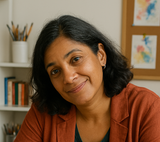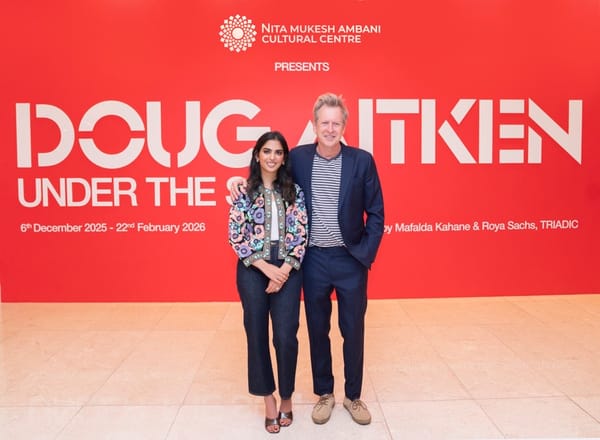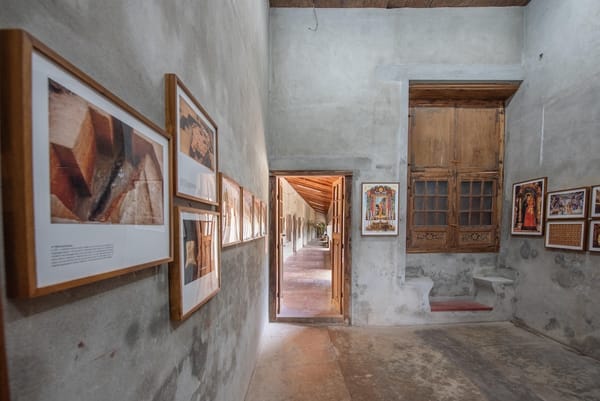From Copying to Creating: Rethinking How We Teach Masterworks
By shifting from imitation to interpretation, today’s art classrooms can transform the study of masterworks into a living dialogue between past and present—one that nurtures originality, critical thinking, and creative freedom.

For centuries, copying the works of the great masters has been a cornerstone of art education. In the studios of Renaissance Italy, aspiring painters meticulously reproduced the compositions of their teachers, learning technique through imitation. The École des Beaux-Arts in Paris continued this tradition well into the nineteenth century, training students to replicate the works of Raphael, Titian, and Poussin before they could attempt their own. This method instilled technical skill and discipline, but it also reinforced a hierarchy—one in which the student was a follower, not a creator.
Today, art education stands at a crossroads. As contemporary artists increasingly blur boundaries between mediums, challenge authorship, and foreground concept over craft, the question arises: what is the role of the “masterwork” in a modern classroom? Should students still copy the masters, or should we move toward a pedagogy that prioritises creativity and critical thinking? The answer may lie not in abandoning tradition, but in reimagining how we engage with it.
The Historical Role of Copying
Copying was once considered essential training. In the ateliers of the Renaissance, students were apprentices who learned by observation and repetition. By copying, they absorbed the master’s handling of light, anatomy, and composition—skills that were difficult to teach through verbal instruction alone. The act of reproduction was not mere mimicry but a form of technical meditation.
Later, in the eighteenth and nineteenth centuries, copying took on a new role in institutionalised art education. The Louvre, for instance, opened its doors to students who would spend hours replicating paintings from the museum’s collection. Copying a masterwork was considered both an honour and an examination of one’s artistic maturity. To “paint like Rubens” or “draw like Michelangelo” was to demonstrate technical mastery and artistic lineage.
However, this system also reinforced a rigid hierarchy between artist and student, original and copy. It was rooted in the belief that greatness was inherited through imitation rather than invention. As modern art movements emerged—Impressionism, Cubism, Surrealism—the very act of copying came to be questioned. Artists like Cézanne and Picasso looked to the old masters not to replicate them, but to deconstruct their methods and find new languages of expression.
The Problem with Traditional Copying Today
In today’s classrooms, the literal copying of masterworks can feel outdated. Many art educators now see it as an exercise that risks stifling originality. Students who spend weeks reproducing someone else’s painting may perfect technique, but often at the expense of developing their own visual voice. The modern student of art is less a craftsman-in-training and more a critical thinker, exploring how visual culture shapes meaning.
Moreover, the accessibility of images online has changed how we interact with art history. A student can now study Caravaggio’s chiaroscuro or Van Gogh’s brushstrokes from a digital reproduction in seconds. The once-radical act of copying a museum piece has lost its aura. Instead of asking students to imitate, educators must ask them to interpret—to see how historical works resonate with their contemporary realities.
There is also the issue of cultural context. Many “masterworks” traditionally studied in art schools are products of European canonisation. This narrow focus sidelines non-Western traditions and reinforces a limited understanding of what constitutes mastery. A 21st-century art curriculum must reflect global perspectives—inviting students to engage with diverse traditions, reinterpret them, and contribute to a broader dialogue of visual culture.
Reinterpreting the Masters
What if, instead of copying a masterwork, students were invited to respond to it? This shift—from imitation to interpretation—transforms the classroom into a space of dialogue between past and present.
For instance, when a student studies Vermeer’s Girl with a Pearl Earring, they might not reproduce it faithfully but instead reinterpret its composition in the context of contemporary portraiture—perhaps using photography, digital collage, or even performance. The emphasis moves from reproducing the image to understanding its visual language: how light, gaze, and silence construct meaning.
Similarly, studying Picasso’s Les Demoiselles d’Avignon could spark discussions on representation, gender, and colonial influence—issues as relevant today as they were revolutionary in 1907. By analysing and reworking such pieces, students learn to critically engage with the power structures embedded in art history.
This approach encourages experimentation and cross-medium exploration. A sculpture student might translate Botticelli’s The Birth of Venus into a 3D-printed form; a photographer might recreate a Rembrandt composition using contemporary lighting and costume. These reinterpretations honour tradition while asserting agency—allowing students to learn from the masters without being bound by them.
The Role of Technology in Reimagining Masterworks
Technology has profoundly expanded how we can teach and experience masterworks. Digital tools enable students to manipulate images, isolate layers of brushwork, or simulate pigment application—all without touching the original canvas. Virtual museum tours allow learners from across the world to “walk through” the Uffizi or Prado and engage with artworks in unprecedented ways.
More importantly, digital art platforms encourage remix culture. Students can sample, edit, and layer existing works to create something entirely new—a form of digital appropriation that challenges conventional notions of authorship. This doesn’t mean abandoning respect for the original; rather, it reflects how art functions in the 21st century, where creativity often emerges through recombination and reinterpretation.
In this sense, technology revives the spirit of the atelier: a shared space of experimentation and mentorship, only now expanded across the globe. The master’s brush has become the stylus, and the canvas is no longer limited to pigment and paper.
Integrating Critical Thinking and Art History
A reimagined pedagogy must balance technical skill with critical inquiry. Students should be encouraged to ask: Why is this painting considered a masterwork? Whose stories are missing? What would this image look like if made today? Such questions shift the focus from the hand that paints to the mind that interprets.
For example, instead of merely copying Monet’s Water Lilies, a class might explore his treatment of perception and colour theory through experiments in abstraction, photography, or installation. By analysing Monet’s fascination with light and transience, students learn not just to paint like him, but to think like an innovator. The goal is not replication, but understanding the creative impulse that drove the work.
Critical discussion can also unpack historical biases. Why are most “masters” male and European? What cultural or political systems contributed to their canonisation? When students engage with these questions, they gain a more inclusive and analytical understanding of art history—one that prepares them to contribute new voices to it.
Towards a New Pedagogy of Mastery
Moving from copying to creating does not mean discarding the past. The study of masterworks remains invaluable—not as templates to reproduce, but as catalysts for thought. The challenge for educators is to design assignments that foster both skill and imagination.
One effective method is analytical imitation: students choose a masterwork and recreate it in their own visual language. For instance, they might reinterpret Goya’s Saturn Devouring His Son as a commentary on modern consumerism, or translate Turner’s seascapes into digital light projections. This process retains the rigor of studying composition and technique while allowing for conceptual freedom.
Collaborative learning can also mirror the communal spirit of historical ateliers. Group projects that reinterpret famous works through collective mediums—murals, installations, or digital animation—encourage dialogue, shared authorship, and problem-solving. The result is a generation of artists who see mastery not as static replication but as dynamic engagement.
Learning to See Anew
Art education is no longer about producing faithful heirs to tradition, but thoughtful challengers of it. When students move from copying to creating, they not only learn how to make art—they learn how to see art. They recognise that every brushstroke in a masterwork was once a radical decision, that every great artist began as a curious student.





